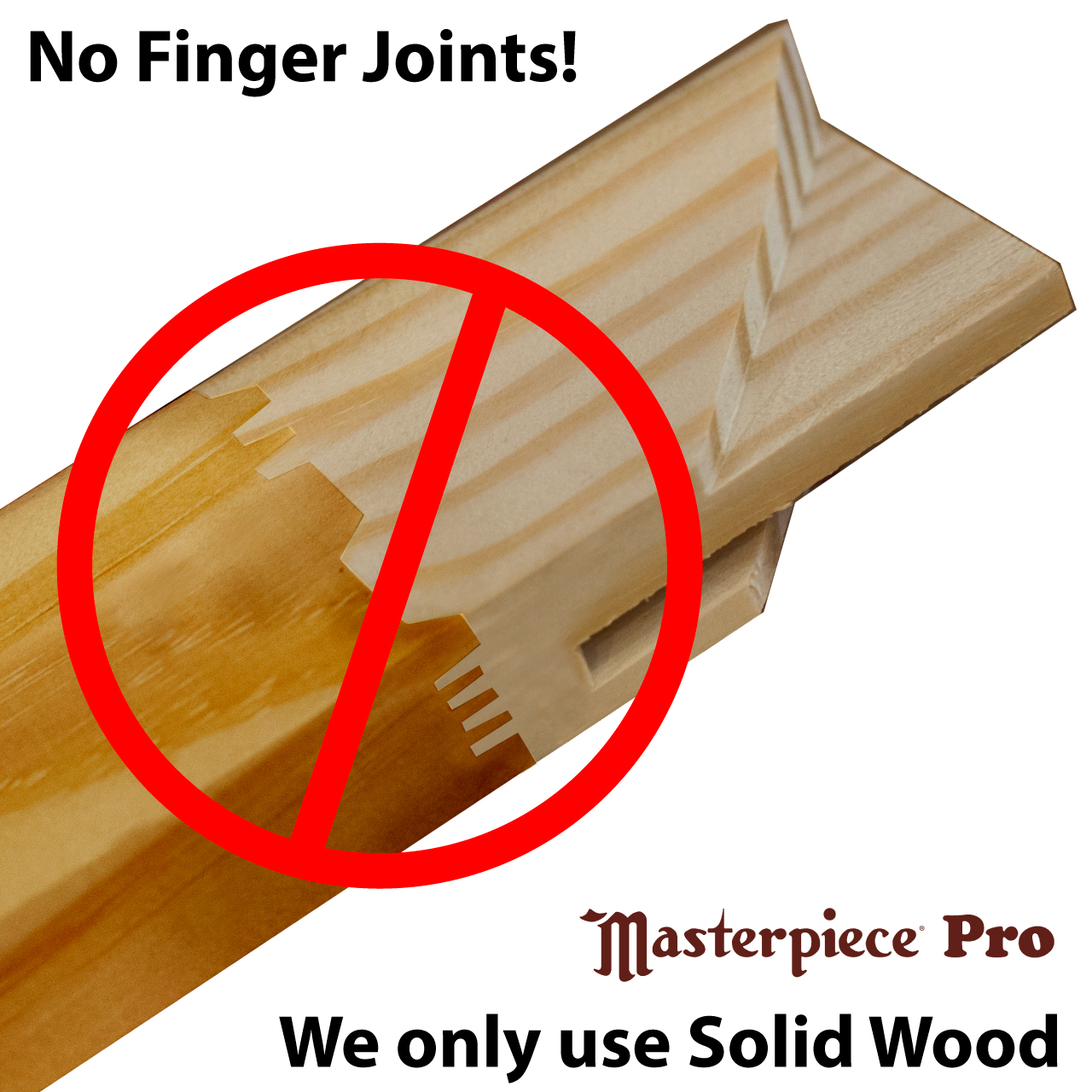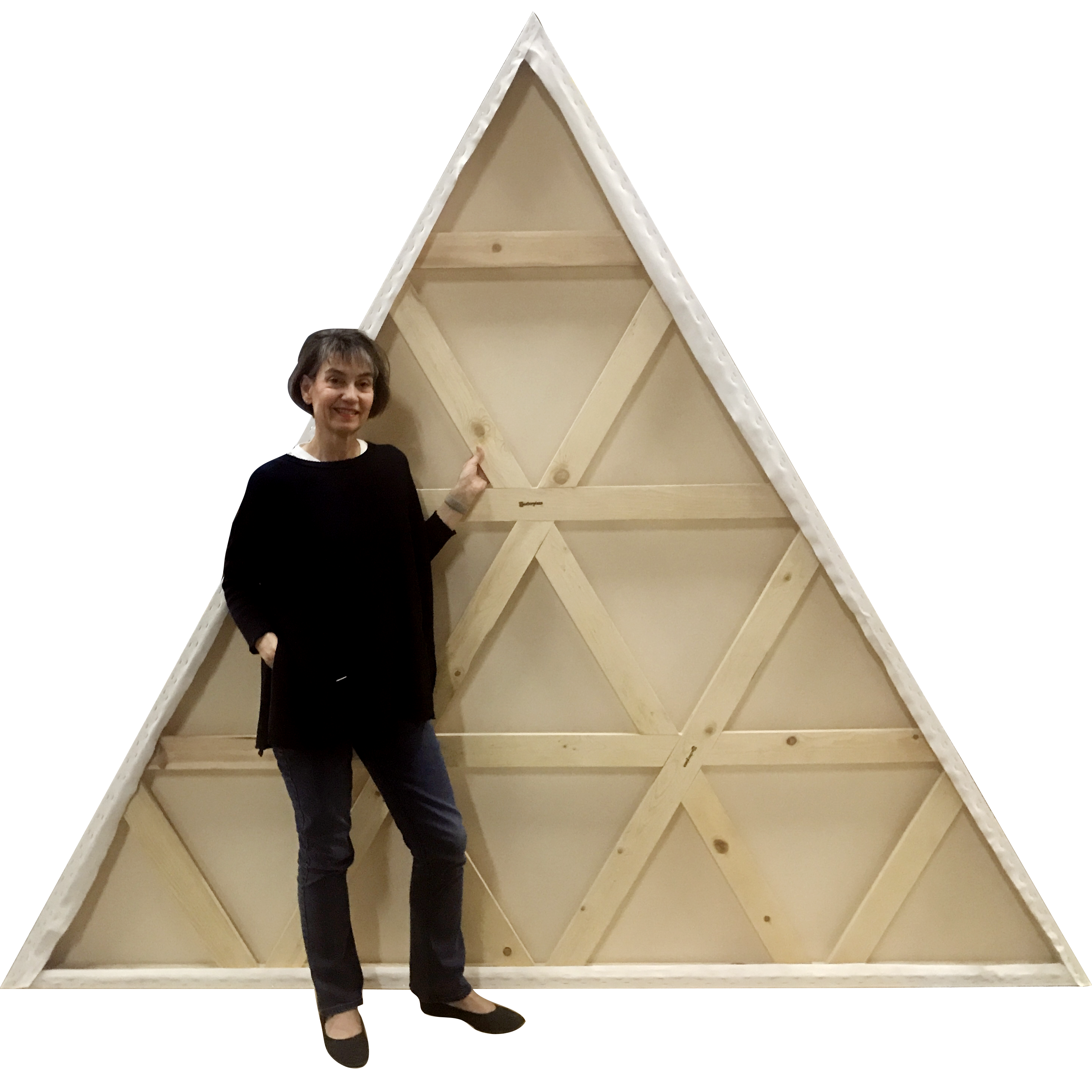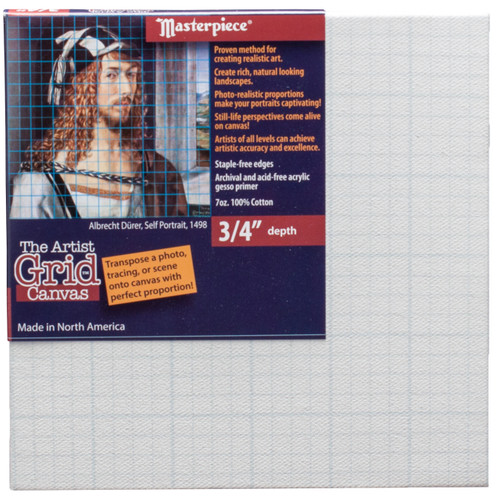Description
12x12 GRID Canvas 3/4" Deep #GRD-1212
Buy a 4-pack and save cost and shipping!

Grid™ Canvas is a unique product that has a grid actually printed on the canvas itself. The grids are 1"x1" with additional 1/4" lighter weight lines, very similar to graph paper. The 100% cotton canvas is 3/4" deep canvas and is stretched using our MasterWrap™ back-stapled method with tailored corners. Our proprietary stretching products uses pneumatically controlled machines that yield drum-tight tension.

Transpose a Photo, Image, Tracing, or an actual scene onto Canvas
As demonstrated by this 1498 self portrait of Albrecht Dürer, himself, the grid process is a proven method for creating realistic art from a photograph, or from an actual scene through a "gridded" glass. Grid™ makes it easier to achieve actual life-like proportions that make your portraits captivating. Still-life perspectives come alive on canvas. Artists of all levels can achieve artistic accuracy and excellence using this method.

Transpose a Scene Directly onto Canvas
This famous 1506 drawing by German artist, Albrecht Dürer, demonstrates the grid transfer process. The drawing is called the "Draughtsman's Net," because he used a glass encased in a wooden frame and black threads to create his grid pattern on the glass. The artist looks through the glass and outlines the subject and that can be transferred to the gridded canvas.
The graphic shows Dürer's entire drawing and zooms-in on the left and right sides to provide a better glimpse of how the grid process. It is a very efficient method for drawing and tracing your main lines with a high degree of accuracy and takes away most of the guesswork when generating your proportions.
You can look-up on-line more about this process and find more drawings, as Dürer himself wrote a book called, "Treatise of Measurement" after having traveled to Italy and becoming totally immersed in Italian Renaissance art theory.

Transpose a Scene Indirectly onto Canvas
Using the gridded glass described above, trace-out your scene on the other side of the same gridded glass, and then use that as your "tracing" to transpose onto the canvas. The grid on the glass corresponds to the grid printed on the canvas.
Enlarge or Reduce your Painted Image
To enlarge your image, draw smaller than a 1" x 1" grid pattern directly onto your image, glass, or plastic sheet. Then correspond the grid on the image with the heavy bordered 1" x 1" squares on the canvas.
To reduce the size of your image, draw a grid larger than 1" x 1" squares on the glass. This works even if you are transposing your image directly or indirectly, as discussed above.
You can literally trace-out exactly what you see on the "gridded" glass. That grid will correspond to the grid on the canvas and you can thereby transpose a scene with unbelievable proportional accuracy.

Build Your Own Draughtman's Net
You could easily construct your own Draughtman's Net, as depicted above, any size you want. Simply buy a piece of glass from your local hardware store, which is quite economical. We make K2™ Stretcher Bars, which are ideal for this task because they have an 1/4" interior groove that will contain the glass, and they are 2.5" deep, so the device will stand on it's edge.
For example, if you buy a glass that is say 24x36 in size, then you could buy two 26 Inch and two 38 Inch K2™ Stretcher Bars that would make a 26x38 frame. Because the frame has an interior groove, the glass will be completely contained by the Stretcher Frame, and you would have effectively constructed a similar device as Albrecht Dürer. And with a dry or wet erase marker you can draw a grid pattern on the glass. You can use your Draughtman's Net as the view-finder, described above, to trace your subject on the glass, and then transfer that image to your corresponding a Grid™ canvas.
True 1:1 Square Proportion - 12x12 Size
12x12 is one of our most desirable square sizes.
The square is perhaps the most intriguing proportion, as it is root of all of the other proportions. It is commonly used in both photography and art. Squares are typically used as the center canvas of a triptych or as a single canvas hung at a 45° angle. The square proportion is long used with medium format professional cameras, and most photographs we see on websites and social media are based on square images. Since all sides of the canvas are the same length, your eye is drawn evenly across the surface of the painting creating a sense of harmony, balance, and a generally a pleasing visual experience. The square format is also a good choice for artists who focus on geometric shapes or patterns in their work, as the regularity of the square shape can help reinforce these elements. Some artists enjoy the challenge of working within the confines of a square format, as it forces them to think creatively resulting in intriguing compositions.
Check-out one of these other sizes in the same 1:1 aspect ratio:
Explore Related Products to this 12x12 Size:
- Other Styles: Classic Cotton™ • Vincent Pro™

Masterpiece Grid™ 3/4" Deep Bar • 1/8" Canvas Clearance
Canvas Clearance is the space between the Bar and the canvas. Generally speaking, more clearance reduces the risk of the canvas touching the wood and creating unsightly lines during painting. Our design provides maximum possible 1/8" clearance for a 3/4"deep profile Stretcher Bar so as not to impact your painting, but still leaving enough wood to the maximize strength of the frame.
- Stretcher Bar Profile produces a 3/4" deep stretched canvas
- 1-1/2" wide Stretcher Bar
- Solid Ponderosa Pine or Fir from the Pacific Northwest

Solid Wood is Archival - Finger Jointed Wood is Not
We only use Solid Wood to build our Stretcher Bars because a solid piece of wood will last indefinitely. When we speak of archival value, it's not just the paint you use and the quality of your canvas and ground, even the wood choices manufacturers make are part of the archival process.
The principal reason manufactures use finger jointed wood is reduce cost, not increase archival value. Wood constantly grows and shrinks when the environment becomes hotter, or colder, or more humid, or more dry. Because finger jointed wood is made-up of multiple and varied pieces of wood, with varying grain patterns and densities, they each absorb and shed moisture at varying rates, which works on the glue joints that hold them together, causing the wood to bow and the joints to eventually fail, and certainly not consistent with increasing the archival value of your artwork frame support.
As a manufacturer, we do our part to conserve as much wood as possible, and still provide a quality made product that will out-perform any other in the marketplace.

Sustainably Managed Forests Coexist with Mankind
We use lumber grown in the sustainable forests of the Pacific Northwest, where thereÕs more standing timber today than last century! There will always be a demand for wood pulp and fiber, but striking a harmonious balance with human coexistence is the essential strategy to which we subscribe. Sustainably managed forests increase our health and abundance of our forests which can be in harmony with this precious natural resource.

America's Custom Shop!
We offer two Masterpiece Classic depths (3/4" & 1-3/8"), as well as three canvas surfaces to choose from. There are dozens of standard sizes available for these products. If you don't find the size you want, our Masterpiece Vincent™ Pro canvases have 200+ sizes to choose from in over a dozen surfaces. And if you can't find what you want, just ask your local retailer or contact us, and we will help you with your next composition.
Guided by our mission to provide unparalleled quality, Masterpiece® stands as the nation's prime influencer in the domain of professional fine-art canvases. Dive into our diverse collection of surfaces and roll sizes tailored for every artist's unique requirements.

The music is not in the notes, but in the silence between.
♦ Wolfgang Amadeus Mozart
A prodigious composer of the classical era, Wolfgang Amadeus Mozart lived a life that was both brief and intensely vibrant. Every composition he crafted was a testament to his genius, pushing the boundaries of musical convention and expectation. This statement about music being found in the silences between notes reveals a profound insight into his understanding of musicality and artistry.
We understand this sentiment deeply. Just as a blank canvas holds infinite potential before the brush touches its surface, it's the pauses, the quiet moments, that give depth and dimension to our creations. The unsaid, the unplayed, the spaces between our strokes or notes, that's where the essence often lies. The beauty of our art lies not just in the overt expressions, but in the subtle nuances and the breaths we take between them. Like Mozart, we realize that it's often the intangible, the pauses, that resonate most profoundly with our audience.
We curated this insightful quote by Wolfgang Amadeus Mozart, and our interpretation thereof; plus we made this portrait in the spirit of creativity. Time to create your own expression!
Additional Details
- SKU:
- GRD-1212
- Canvas and Depth:
- 0.75 in. Grid Canvas
- Width:
- 12 Inch
- Length:
- 12 Inch
- Aspect Ratio:
- 1:1 Square








